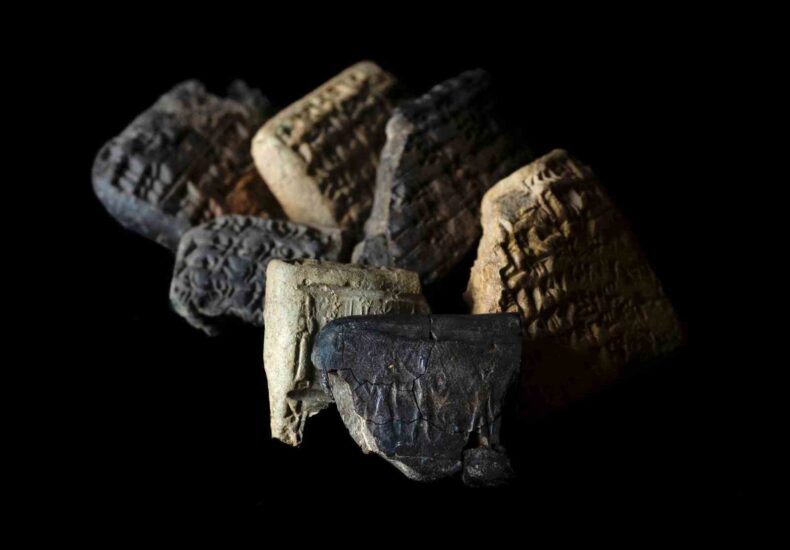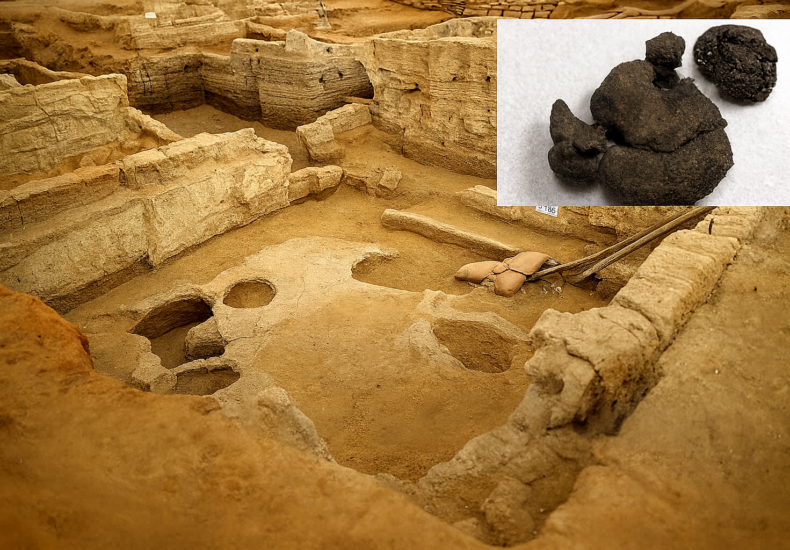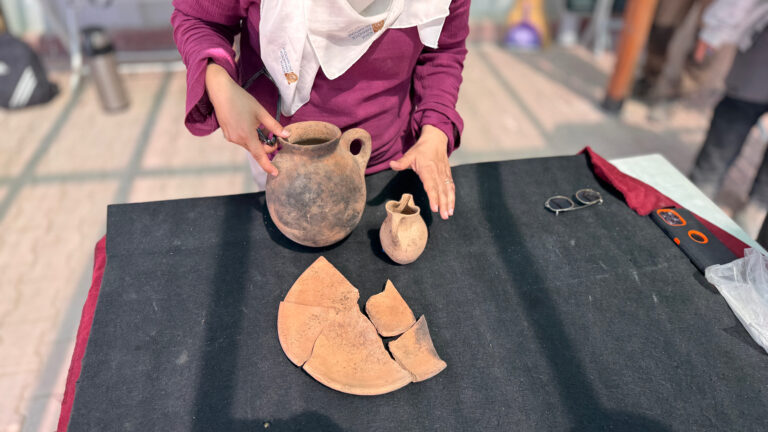
4500-Year-Old Burnt House and Hellenistic Fortress Wall Unearthed at Aşağıseyit Mound in Denizli
Located in Türkiye’s western province of Denizli, Aşağıseyit Mound stands as one of the key archaeological sites revealing uninterrupted settlement layers from the Late Chalcolithic to the Roman period. The mound, which has preserved traces of eight distinct habitation phases, continues to shed light on the cultural transitions of inner Western Anatolia — from early

Lost Archive of the Mitanni Empire with Akkadian Cuneiform Tablets and an Unknown Hittite Prince Unearthed in Türkiye
Archaeologists have unearthed a lost archive of the Mitanni Empire, including dozens of Akkadian cuneiform tablets and seal impressions belonging to a previously unknown Hittite prince, during excavations at the ancient city of Alalakh (Aççana Höyük) in southern Türkiye’s Hatay Province. The discovery, conducted under the Heritage for the Future Project (Geleceğe Miras Projesi), sheds

Anatolia’s Ancient Taste: 8,600-Year-Old Bread and 4,000-Year-Old Chickpeas Unearthed in Türkiye
Archaeological excavations supported by the Turkish Ministry of Culture and Tourism have brought to light the ancient taste of Anatolia, revealing extraordinary traces of the region’s early culinary and agricultural traditions. From 4,000-year-old chickpeas in Kütahya to 8,600-year-old bread remnants in Konya, these discoveries show how ancient communities cultivated, prepared, and ritualized food thousands of

Unbroken Life Through the Ages: 8,000 Years of Continuous Settlement Unearthed at Gökhöyük in Konya
Archaeologists in Türkiye’s central province of Konya have uncovered evidence of an extraordinary 8,000-year span of continuous human habitation at Gökhöyük (also known as Kanal Höyük), located in the Seydişehir district. First identified by British archaeologist James Mellaart in 1954, the site reveals settlement layers dating from the 7th millennium BCE to the 1st millennium

5,000- and 11,000-Year-Old Burials Unearthed at Çayönü: Shedding Light on Neolithic and Bronze Age Anatolia
Archaeologists working at the Neolithic settlement mound of Çayönü, in Ergani district of Diyarbakır, Türkiye, have unearthed six ancient burials—five from the Early Bronze Age, about 5,000 years old, and one dating back 11,000 years to the Neolithic period. The discovery provides crucial evidence of how one of humanity’s earliest farming communities buried and remembered

Bronze Age Idols Unearthed in Western Türkiye: 4,500-Year-Old Ritual Treasures Found at Tavşanlı Höyük
Archaeologists have uncovered a remarkable collection of 4,500-year-old human-shaped idols at Tavşanlı Höyük, one of the largest Bronze Age settlements in Western Anatolia. The discovery, announced by Culture and Tourism Minister Mehmet Nuri Ersoy, includes marble, bone, and terracotta figures that provide unprecedented insights into the spiritual and domestic life of the Early Bronze Age.

3,500-Year-Old ‘Kitchen Set’ Discovered at Karahöyük in Türkiye’s Central Anatolia
Archaeological excavations in Karahöyük, located in Konya’s Meram district, have revealed striking finds that shed light on everyday life in central Anatolia around 3,500 years ago. A complete kitchen set consisting of a jug, a plate, and a handled cup, along with silver plates wrapped in cloth, children’s toys, figurines, and cremation burials, has been

Ritual Infant Remains Discovered at Hittite Site of Uşaklı Höyük in Central Anatolia
The 2025 excavation season at Uşaklı Höyük in Central Anatolia concluded with a striking discovery relevant to both archaeology and Hittite history. The Italian Archaeological Mission from the University of Pisa uncovered infant remains around a monumental structure known as the “Circular Building,” believed to have ritual significance. Excavations focused primarily on terrace areas to

2025 Excavations Begin at Oylum Höyük, a Major Administrative Center of the Hittite Period
Archaeologists have launched the 2025 excavation season at Oylum Höyük, one of the largest archaeological mounds in southeastern Türkiye, located near the Syrian border in Kilis. The site, known for its strategic importance during the Hittite Empire, is yielding new clues about political and administrative structures in the Late Bronze Age. The excavation is being

Excavator Operator Uncovers Ancient Treasure: Hittite Bull-Headed Jug Piece Now on Display in Sivas Museum
In a remarkable twist of fate, a routine sand excavation near Türkiye’s Kızılırmak River led to the discovery of an extraordinary artifact from the ancient Hittite civilization. A bull-headed piece of a massive ceremonial jug, dating back over 3,000 years, has been unearthed by an excavator operator in the Şarkışla district of Sivas Province—and is
